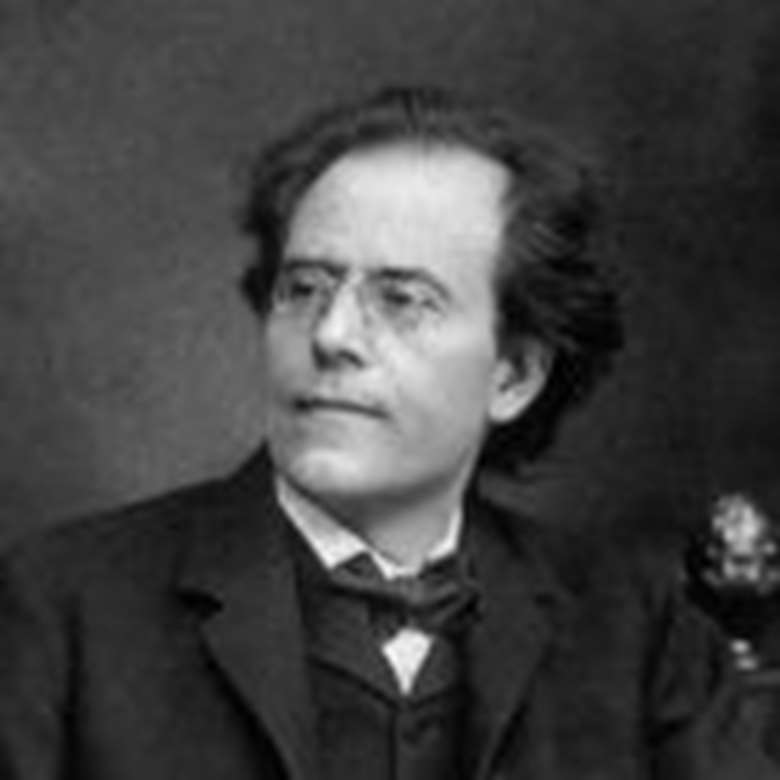Mahler's Symphony No 4, by David Zinman
Gramophone
Wednesday, January 14, 2015

Mahler came to regard the Fourth Symphony as the closing work in a quartet of works, although there are still seeds of it left in the Fifth Symphony. The music in the Fourth is all derived from the wonderful song in the last movement. He had been thinking about that song – 'The Heavenly Life' – for a long time and within that song he had found the seeds for many ideas he had already used in the Third Symphony. Something about that song really spoke to him and obsessed him. In fact he originally included the song itself in the Third Symphony, but then he replaced it with the Bell Song – 'What the Child Tells Me' – immediately before the closing Adagio. This song had been hanging around for a long time and it spawned both the Third and the Fourth symphonies.
Consequently, the Fourth is very unusual, in that it was composed backwards, with the last movement composed first and everything else in the piece then relating thematically to this heavenly finale. Maybe the first three movements therefore describe a heavenly life on Earth. The first movement could describe a man with much cheerfulness and delight in his life – all touchingly human. Then comes the second movement, with Death striking up a dance. This is a very childish view of Death and the fears that we have, with Death fiddling very wildly on an out-of-tune violin. Then the third movement – the most wonderful movement of the piece – is like a very beautiful painting of St Ursula, who appears by name in the finale. So the entire piece is very much a continuation of the Third Symphony, with all those programmatic titles for movements – 'What the Flowers Tell Me', 'What God Tells Me', 'What Nature Tells Me' and so forth.
What makes the piece so wonderful is its classical form – only four movements, played by a very small orchestra, without trombones and tuba. It is in a way an odd one out, providing contrast but also continuation. These little motifs that appear in the Third and the Fourth symphonies are very beautifully developed. For me, it is the one truly perfect symphony he ever wrote, and also the most misunderstood, because he tried to go back to a world of purity and naivety, where music is just music and music speaks directly, just as a child speaks. I think that there’s a lot written about his ideas about the importance of naivety in life.
This is the most folk-like of his works and I think it’s my favourite of them all. The first recording I got to know was the amazing Szell recording – I also like his Sixth Symphony very much – but I think my first recollection of hearing Mahler was hearing Mitropoulos rehearsing in New York. Even though the last movement of the Ninth is something I shall always cherish and adore, the Fourth is something even greater for me. The appearance of Heaven at the end is so wonderful, and he makes such a noise with such small means.
What is very fascinating in this symphony is the manner in which he uses Klangfarben: for the first time the voices come out of one another, and various distances of voice and sound are written into the piece. There is such sophistication, and he was at his most sophisticated as a conductor at that time. It’s a study for a composer, to see how Mahler balances everything and ensures that all the detail comes out. He was beset with problems at his opera house at the time, but then he happened to meet Alma who, let’s say, changed him for a time.
There are many attempts at this symphony, and the hardest aspect is finding the ideal voice from the singer in the last movement. That’s very hard, because some who have a wonderful top have a feeble low register and some who have a feeble top have a wonderful low register. The Bernstein recording tries a boy soprano and that doesn’t work either. It’s one of those things where you want to get to the core of it and find the perfect solution and you never quite do. This symphony is a very special work and I will carry on attempting to get to its heart for as long as I live. There is something about that slow movement which is just universal, timeless and beautiful. It’s perfect – the one truly still centre that Mahler found.
Interview by Michael McManus (Gramophone, March 2010)
Explore Mahler's symphonies with the leading Mahler conductors:
Symphony No 1, by Charles Mackerras
Symphony No 3, by Lorin Maazel
Symphony No 4, by David Zinman
Symphony No 5, by Simon Rattle
Symphony No 6, by Christoph Eschenbach
Symphony No 7, by Valery Gergiev
Symphony No 8, by Michael Tilson Thomas
Symphony No 9, by Esa-Pekka Salonen











